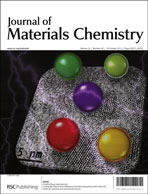In this study, we report on a rapid microwave nonaqueous strategy for the straightforward synthesis of hierarchical porous quaternary chalcogenide Cu2FeSnS4 (CITS) hollow chain microspheres (HCMs) for the first time. It was demonstrated that both in situ generated 1D CuI(Tu)Cl complex microrod sacrificial precursor and the capping agent octadecylamine (ODA) were crucial for the formation of the CITS HCMs, which involves the CuI(Tu)Cl-governed nucleation growth and ODA-dominated oriented-assembly followed by Ostwald ripening hollowing process. The as-prepared CITS HCMs were characterized by X-ray diffraction (XRD), scanning electronic microscopy (SEM), transmission electron microscopy (TEM), X-ray photoelectron spectroscopy (XPS) and nitrogen adsorption–desorption techniques. Thanks to the hierarchical hollow morphology and unique porous structure, the resulting CITS HCMs exhibited super capability to remove organic dye pollutant in water. Our findings shed light on the design and fabrication of novel adsorbents with high performance based on the hierarchical hollow quaternary chalcogenides.

You have access to this article
 Please wait while we load your content...
Something went wrong. Try again?
Please wait while we load your content...
Something went wrong. Try again?


 Please wait while we load your content...
Please wait while we load your content...